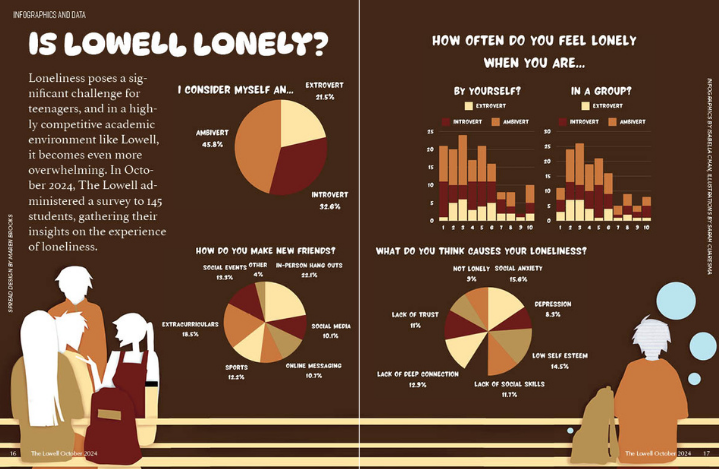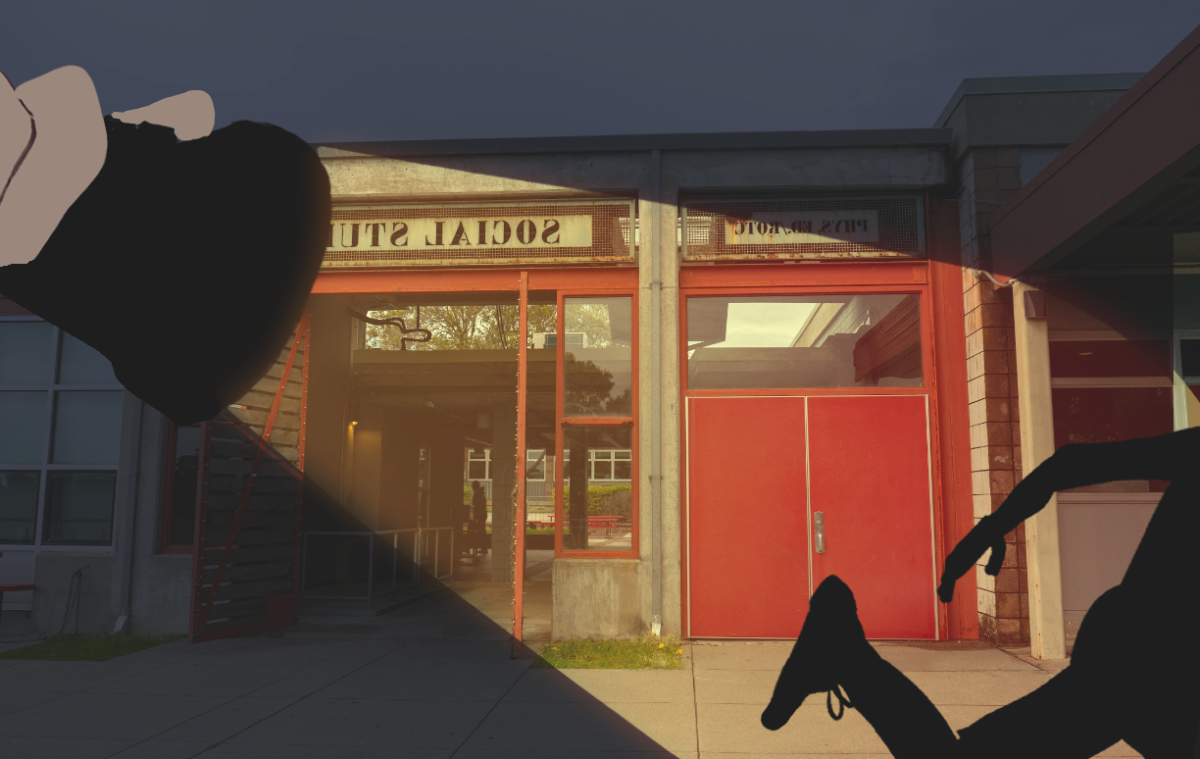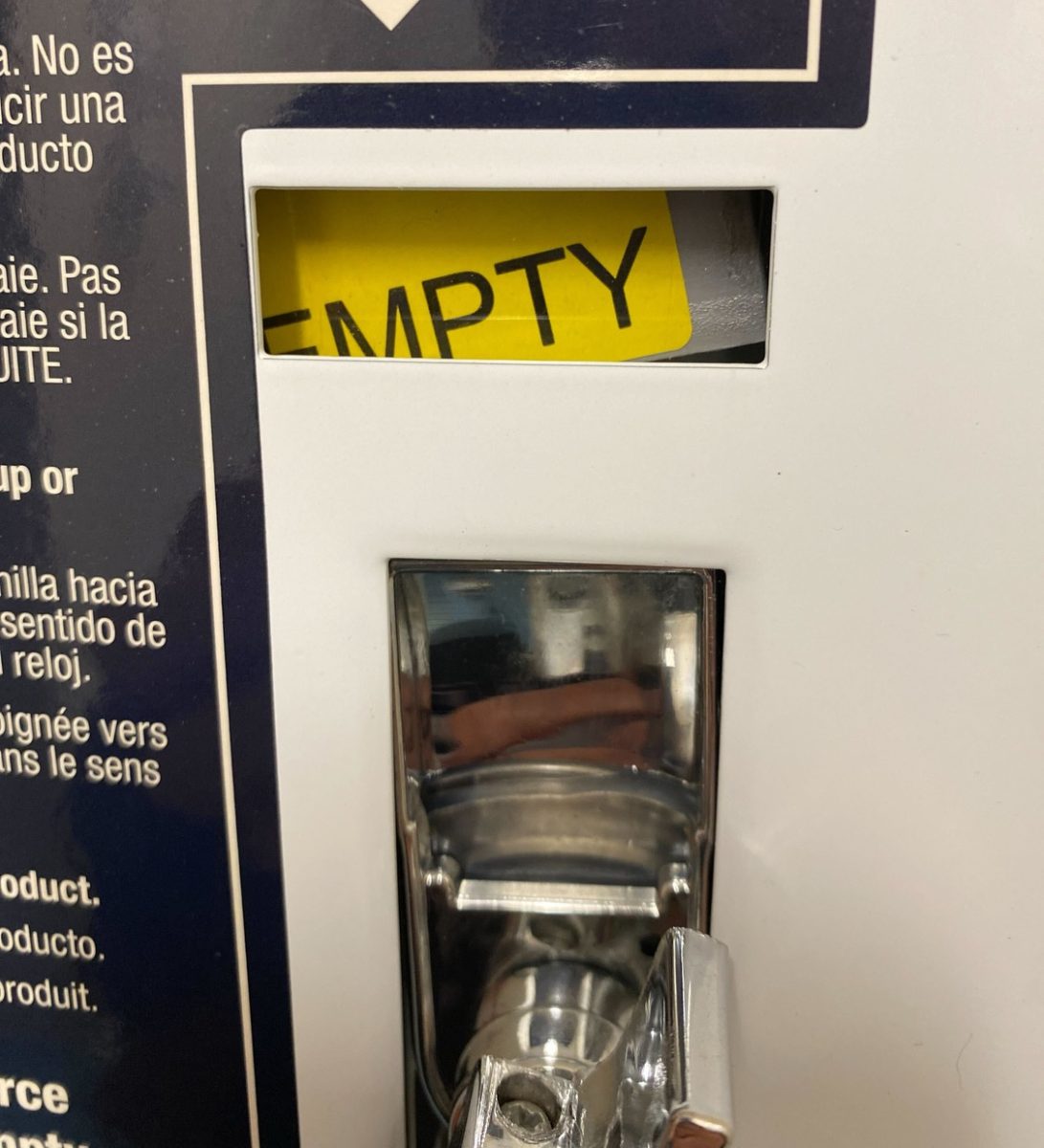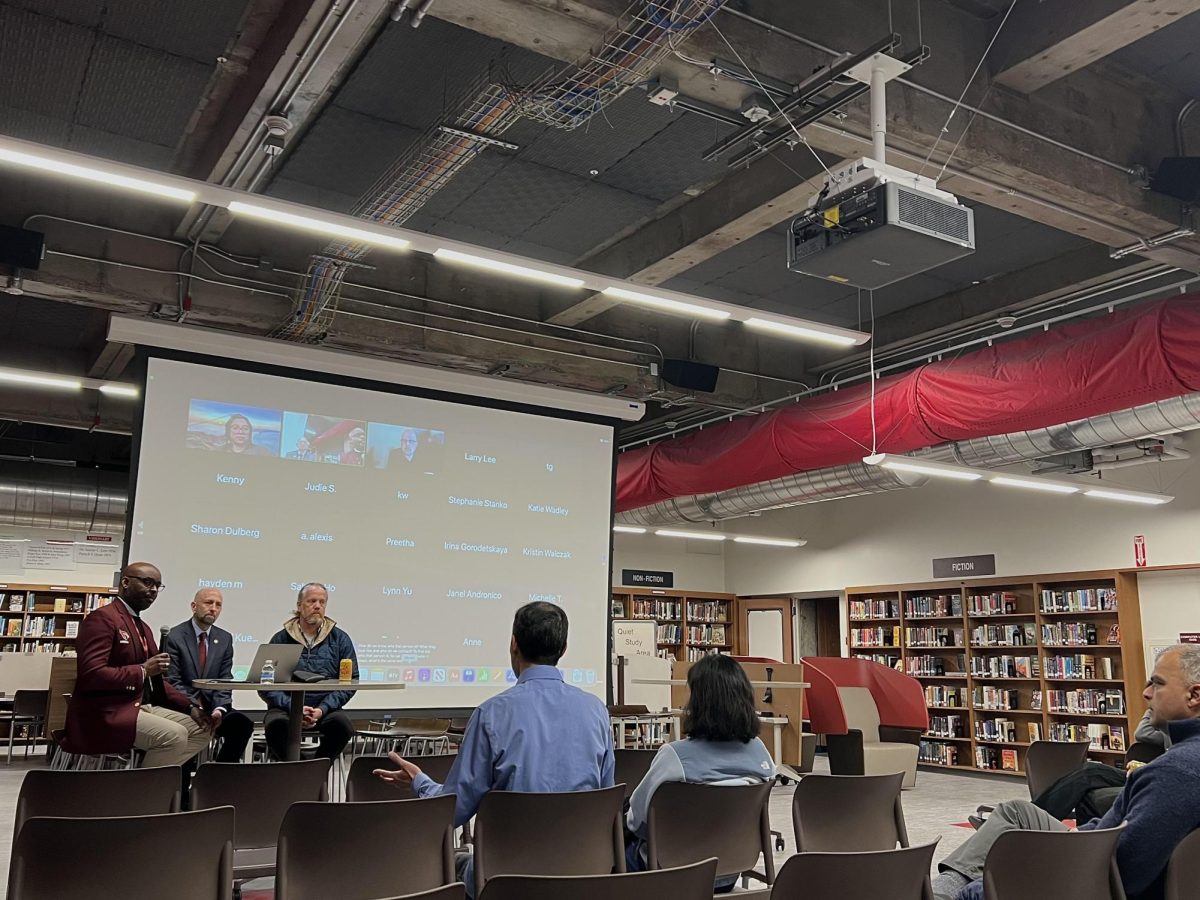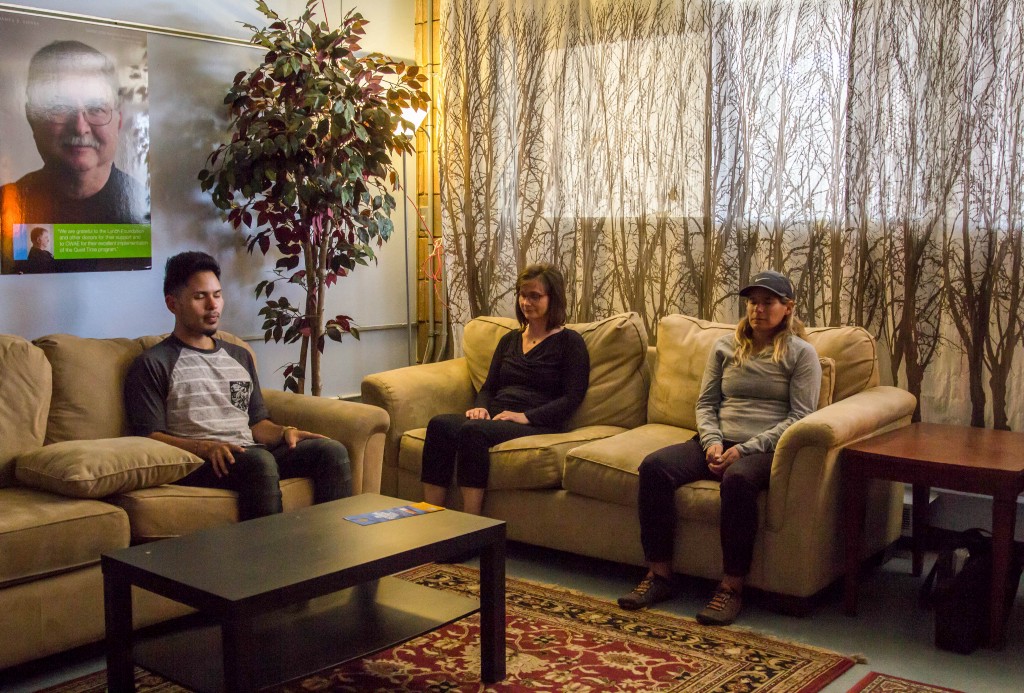
Next to the beanery, near the courtyard, there is a newly decorated room filled with several couches and curtains with tree patterns. Dim lights come from the lamps and reflect on the cadet blue wall. This is Lowell’s new meditation lounge, where the Thursday group meditation sessions take place.
Inside the room, assistant principal Margaret Peterson’s voice softly rises. “Now close your eyes and breathe,” she says. Here, participants are leading the way of practicing meditation at Lowell.
Since 2012, students and teachers have requested hosting meditation sessions at Lowell. “It was brought to me by some teachers and students who had been already meditating and were interested in doing it,” Peterson said. Later, the idea for creating a school meditation lounge was launched by students of the Lowell Health Committee. Students had also shown interest in meditation in a 2017 survey conducted by Peterson, in which the majority of Lowell students surveyed said they would like to have meditation training. The meditation room was finally finished this fall semester with the help of donations from several Lowell teachers and staff members.

In the spring semester of 2018, the Quiet Time program, a private stress reduction program for middle and high schools, will be introduced to Lowell students. This will be a pilot project conducted by Peterson and assistant principal Orlando Beltran, examining transcendental meditation, a specific form of silent mantra meditation; and mindfulness-based meditation. Participants will include students in yoga classes, academic literacy for English learners, peer mentoring and leadership.
In addition to the Quiet Time program, Lowell will provide the opportunity for students and faculty to utilize the meditation room during their free time at school starting this year. The meditation room will be open from block 5 to after school. Teachers have volunteered to staff the meditation lounge during their prep periods.
One of the major inspirations for establishing the mediation program and lounge is that stress and anxiety are very common phenomena at Lowell. “What I have seen is such a dramatic increase coming through my office of students who have felt an extreme amount of stress, anxiety and pressure and have had a really tough time,” Peterson said. “It’s not just the workload, there is home life, school life.” Stress and anxiety can be very harmful to people, causing headaches, sleep problems and muscle pain, according to Jeff Rice, the director of the San Francisco Quiet Time program.
“It is a quiet time to decompress, especially towards the end of the week”
Many teachers who are doing meditation themselves said they would continue to meditate and recommend it to students. They all reported that they feel more calm after meditation. “It is absolutely a part of my life now,” English teacher David Yuan said. “I look forward to it and it is not something that I am making myself do anymore.” Retired Lowell teacher Michelle Winter pointed out, “People at Lowell are very conscientious, I think they are extremely vulnerable to stress. So meditation could be super valuable to them.”
Yuan, who has been attending the Thursday meditation sessions since they began at the beginning of this semester, believes group meditation can have advantages that individual meditation does not have. “I find the meditation really helps me to deal with stress, and I finally get even more out of it when I am with others,” he said. “It is kind of a group energy that many of us can feel.” Likewise, English teacher Anne Guina has very good feedback on the meditation sessions. “It is a quiet time to decompress, especially towards the end of the week,” she said.
So why do so many teachers praise meditation? There are numerous benefits to meditation. It can reduce stress, anxiety, anger, fatigue, insomnia and depression, and at the same time increase calmness, energy, motivation, focus, happiness, self-esteem and self-confidence, according to Rice.

Five minutes of meditation can achieve two to three times deeper rest than sleep, according to a study by Scientific American. The study found reductions in the breathing rate and oxygen consumption of meditators, allowing the body to remove stress and fatigue that is too deep for sleep to address.
Meditation can also grow intelligence and develop new brain cells. As reported by Human Physiology, when you meditate, there is an increase in response that is more widely distributed across the cortex, indicating a greater participation of the whole brain in response to a stimulus. According to the International Journal of Neuroscience, brainwave coherence increases, indicating greater communication between different parts of the brain. Communication between the prefrontal and anterior lobes is associated with improved decision making and behavior.
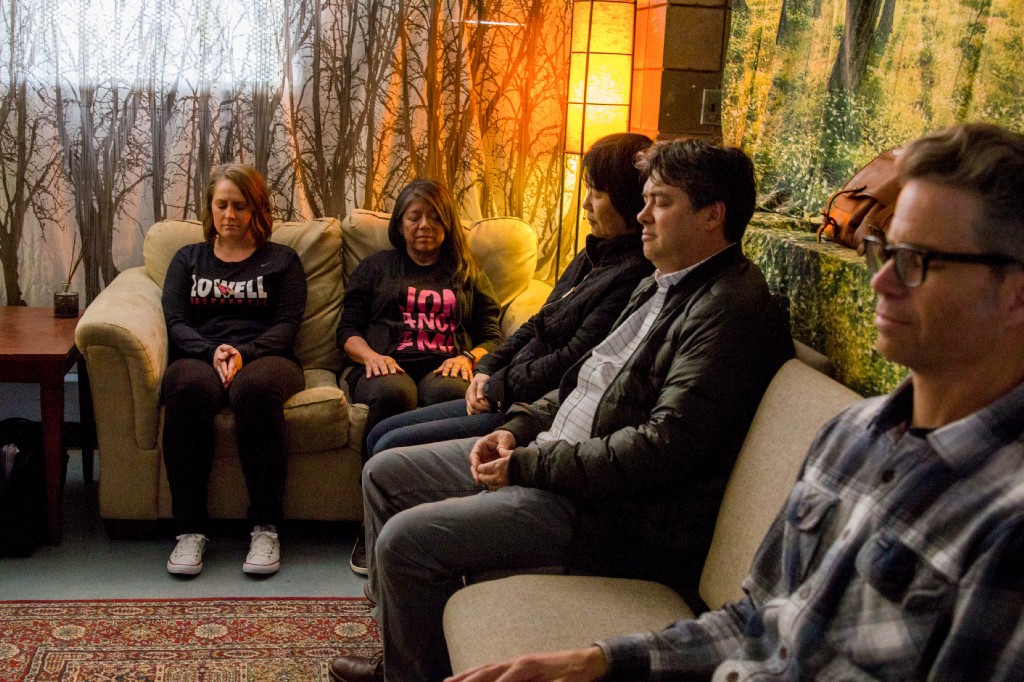
In addition to the physical transformations meditation can lead to, meditation also helps improve mental health. Winter said that after meditation, she feels emotionally stable and happier. “Now my happiness is deep, it reaches deep into me,” she said. Meditation has become an indispensable part of Winter’s life. “I never want to go back to the ways I was before learning to meditate,” she said. “I will meditate twice a day for the rest of my life.”
Meditation can also serve as a reflection both physically and mentally. Spanish teacher Carole Cadoppi, who sees meditation as a way to reflect on her tiredness. She believes that meditation allows her to listen to her body by getting physical evidence. “It’s almost like having another person that you trust is looking and telling you.” In the mental aspect, Guina points out meditation helps her with self-reflection. “It kind of helped me with what I need to do for myself and my class, it was a reflective time,” she said.
There is evidence that meditation has improved other schools in SFUSD. Visitacion Valley middle school is an example. It is located in an area where, according to SF Gate, “gunfire is as common as birdsong.” But in the recent decade, it has had a significant transformation, becoming the happiest school in San Francisco according to California Healthy Kids Survey. This increase in happiness coincided with the start of a new meditation regimen. The students started meditation twice a day after the school adopted the Quiet Time program in 2007. According to The Guardian, in 2009–10, the number of student suspensions was among the lowest in the city and daily attendance rates rose to 98 percent. Remarkably, average GPA improved and about 20 percent of graduates were admitted to Lowell High School, which was a rarity before.
“I find the meditation really helps me to deal with stress, and I finally get even more out of it when I am with others”
Every student at Visitacion Valley participates in the meditation program, as it is mandatory. At Lowell, almost no students are attending the Thursday meditation sessions. So far, getting people- especially time-stressed students to “do nothing” for 20 minutes has been a challenge, despite the proven benefits of meditation. Defying the stigmas of meditation, meditators expressed their opinions. “You might think at first it is a waste of time, because it is like twenty minutes of doing nothing,” Spanish teacher Marie Martinez said. “But if we are doing many things when we are not focusing, that really wastes a lot of time.”




